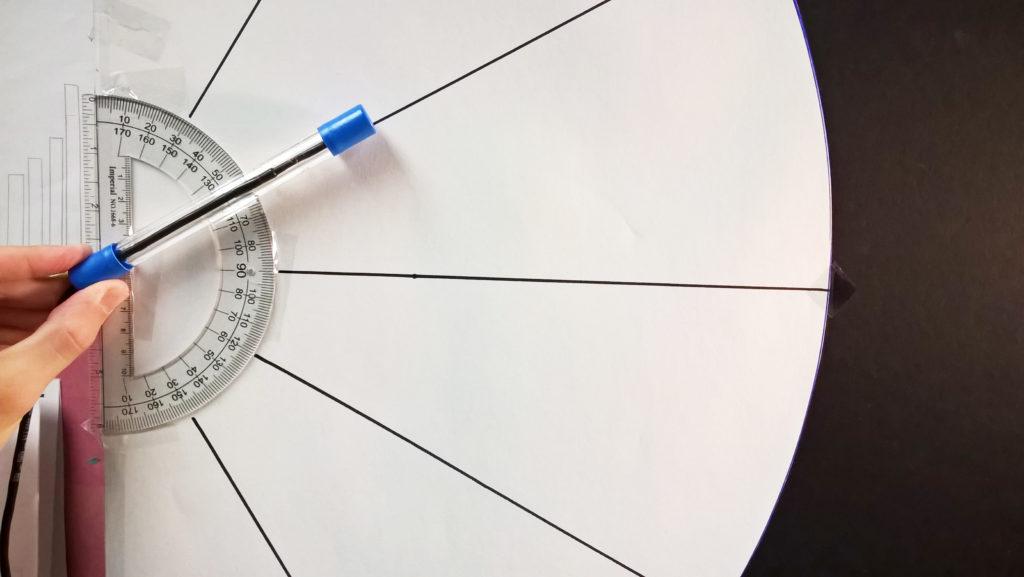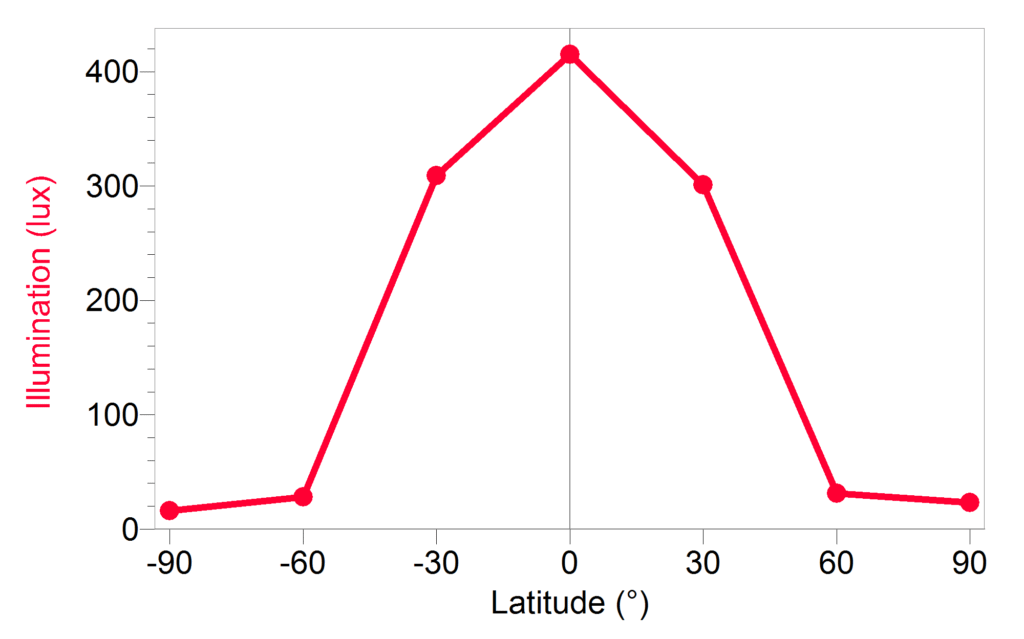Paul Osuna, science teacher at Rancho Del Rey Middle School in Chula Vista, California, sent us a new take on the “Angle of Insolation” experiment found in several of our lab books. His intent is to eliminate the concept of Earth’s tilt from the experiment and focus solely on the effect of latitude. In his variation, a Light Sensor is placed at various angles in relation to a lamp, simulating the angle of the surface of the Earth at various latitudes in relation to the sun. A Go Direct® Light and Color Sensor could also be used.

Sample data from Osuna’s experiment illustrate the intensity of the sun at the equator, 0°, and how quickly intensity drops off near the poles, 90° and –90°. Both incandescent bulbs and LEDs were tested.

In Osuna’s version of the experiment, students also use a Voltage Probe to measure the output of a small solar panel placed at these same angles and get similar results. A Go Direct® Voltage Probe could be used in the same way.
In the version of this experiment published by Vernier, students tape a Stainless Steel Temperature Probe or Surface Temperature Sensor to a globe at various latitudes. A lamp simulates the sun and causes temperature changes. Several assumptions are made in our version, however, including that the temperature probe accurately reflects the temperature of the surface of the globe at that location. This isn’t always a good assumption due to incomplete contact of the sensor to the globe, time to reach equilibrium temperature, and varying distances to the lamp. Osuna’s variation of the experiment eliminates these issues.
| Experiment | Download | |
|---|---|---|
| How Does Insolation Change with Latitude? | Student | Instructor |
